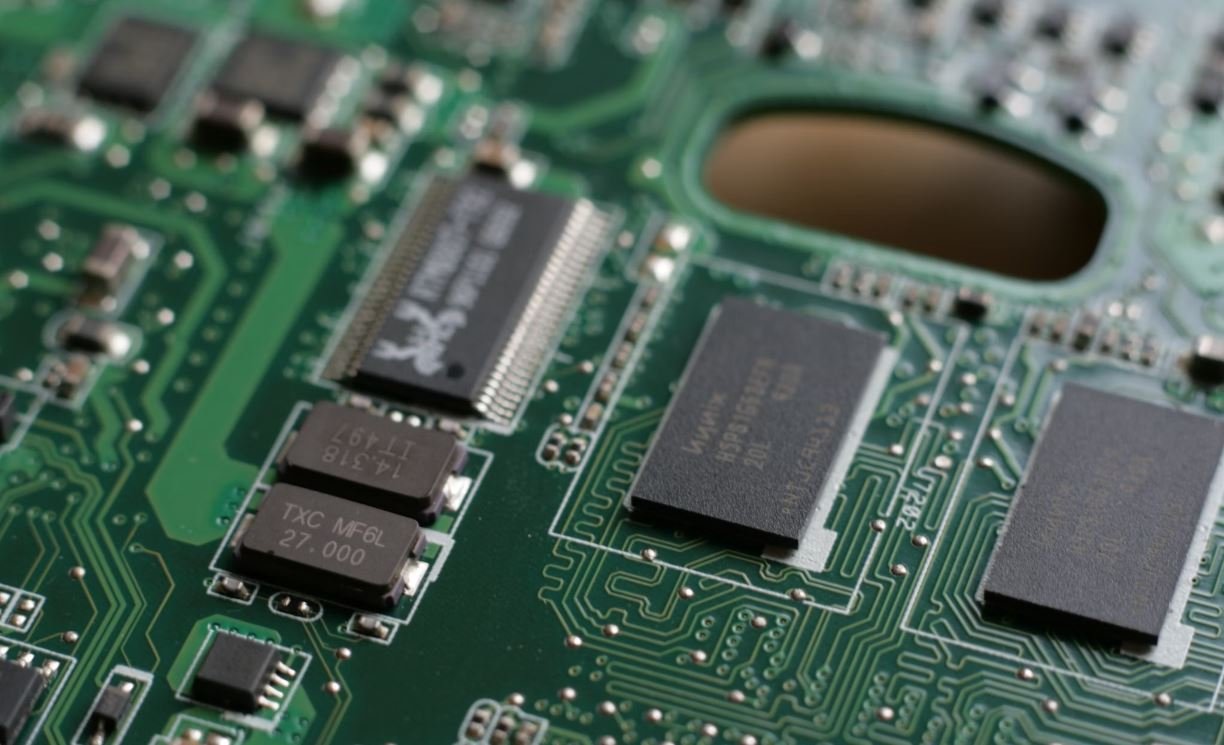Why Production Factors Move
Production factors refer to the various inputs required for the production of goods and services, such as labor, capital, land, and entrepreneurship. Understanding why these factors move is crucial for businesses and policymakers alike. In this article, we will explore the reasons behind the movements of production factors and their implications.
Key Takeaways
- Production factors, including labor, capital, land, and entrepreneurship, are essential inputs in the production process.
- The movement of production factors is influenced by factors such as technological advancements, changes in government policies, and shifts in consumer preferences.
- Understanding the reasons behind the movements of production factors can help businesses adapt to changing market conditions and policymakers design effective economic policies.
Technological advancements play a significant role in shaping the movement of production factors. *New technologies can render certain jobs obsolete while creating demand for new skills and knowledge.* For example, the rise of automation has resulted in the displacement of many manufacturing jobs, while simultaneously increasing the demand for workers skilled in programming and robotics.
Changes in government policies can also drive the movement of production factors. *Tax incentives and subsidies targeting specific industries can attract businesses and investment to certain regions.* For instance, offering tax breaks to renewable energy companies may encourage the establishment of wind farms in areas with high wind potential, creating jobs and driving economic growth in those regions.
Consumer preferences and market demand can cause production factors to move. *Changes in consumer preferences towards greener and sustainable products have led to a shift in production towards environmentally friendly practices.* This shift has created new opportunities for businesses focused on renewable energy, recycling, and eco-friendly manufacturing techniques.
Impact of Production Factor Movements on the Economy
The movements of production factors have significant implications for the economy. Let’s explore some of them:
- Increased efficiency: When production factors move to their most productive uses, overall economic efficiency improves. For example, if labor moves from lower productivity industries to higher productivity industries, the economy’s output can increase with the same amount of resources.
- Regional development: Movement of production factors can contribute to the development of specific regions or industries. This can help reduce regional income disparities by creating job opportunities and attracting investment to previously underdeveloped areas.
- Innovation and growth: The relocation of production factors can catalyze innovation and stimulate economic growth. When factors of production move to more innovative industries, they can benefit from the proximity to research and development centers, fostering technological advancements.
Factors Influencing the Movements of Production Factors
Several factors influence the movement of production factors. Let’s examine some of the key drivers:
| Factor | Influence on Production Factor Movements |
|---|---|
| Technological advancements | Rapid advancements in technology can change labor requirements and the nature of production, necessitating the movement of production factors. |
| Government policies | Government policies, such as taxes, subsidies, and regulations, can incentivize or deter the movement of production factors. |
| Market demand and consumer preferences | Changes in consumer preferences or market demands can drive the movement of production factors towards meeting new needs and demands. |
In addition to these factors, labor mobility, access to resources, infrastructure development, and international trade also play important roles in shaping the movements of production factors.
Exploring Production Factor Movements through Data
To gain further insights into production factor movements, let’s analyze some relevant data points:
| Sector | Net Job Growth (2010-2020) |
|---|---|
| Healthcare and Social Assistance | +5,716,000 |
| Professional and Business Services | +5,345,000 |
| Construction | +1,918,000 |
| Manufacturing | -547,000 |
According to the data above, the healthcare and social assistance sector experienced the highest net job growth in the United States from 2010 to 2020, while the manufacturing sector witnessed a decline in employment. This shifting trend reflects the movement of production factors driven by changing demands and technological advancements.
Conclusion
In summary, the movement of production factors is influenced by various factors, including technological advancements, government policies, and consumer preferences. Understanding these dynamics is crucial for businesses to adapt to changing market conditions and for policymakers to design effective economic policies. By analyzing data and considering relevant factors, industries and regions can maximize their potential for growth and development.

Common Misconceptions
Paragraph 1: Production Factors Do Not Move
One common misconception people have is that production factors, such as labor, capital, and land, have the ability to move on their own. However, production factors are not autonomous entities that can physically relocate. Rather, they refer to the inputs used in the production process, and it is the decisions made by individuals and firms that determine where these factors are utilized.
- Production factors are not mobile entities on their own.
- Decisions made by individuals and firms determine the location of production factors.
- Availability and accessibility of production factors may vary across regions.
Paragraph 2: Factors of Production are Constant
Another misconception is that the factors of production remain constant over time. In reality, the availability and importance of certain factors can change due to technological advancements, changes in market demand, or shifts in government policies. For example, the rise of automation and artificial intelligence has reduced the reliance on manual labor and increased the significance of capital and knowledge as production inputs.
- The factors of production can vary over time.
- Technological advancements can impact the relevance of certain production factors.
- Changes in market demand can influence the importance of different factors.
Paragraph 3: Production Factors are Interchangeable
It is often assumed that production factors are completely interchangeable and can be easily substituted for one another. While some degree of substitution is possible, factors of production are not always perfect substitutes. Each factor possesses unique characteristics and, as a result, they have different marginal productivity and costs. For example, skilled labor and unskilled labor may not be easily substitutable in certain industries, leading to different production outcomes.
- Production factors have varying degrees of substitutability.
- Factors possess unique characteristics affecting productivity and cost.
- Substitution of factors may not always lead to the same production outcomes.
Paragraph 4: Labor is the Most Important Factor
One misconception is that labor is the most crucial factor of production. While labor plays a significant role, the importance of other factors, such as capital and technology, should not be overlooked. In many industries, capital investments and technological advancements have become fundamental drivers of efficient and productive production processes. The relative importance of each factor depends on the specific industry and its technological requirements.
- Capital and technology can be equally or more important than labor in certain contexts.
- The significance of factors varies across industries.
- Innovation and technology can drive productivity gains.
Paragraph 5: Factors of Production are Only Physical
Some people wrongly believe that factors of production are solely physical in nature. While land and physical capital are examples of tangible factors, there are also intangible factors of production, such as knowledge and human capital. Intellectual property, skills, and education are critical factors that contribute to the overall productivity and competitiveness of an economy. Neglecting these intangible factors can lead to an incomplete understanding of the production process.
- Intangible factors, such as knowledge and human capital, are essential components of production.
- Intellectual property and skills contribute to productivity and competitiveness.
- Overlooking intangible factors can hinder an understanding of the production process.

Factors Affecting Production: Labor
The availability and cost of labor have a significant impact on production. In this table, we examine the average hourly wages of workers in different countries and their contribution to the overall GDP.
| Country | Average Hourly Wage ($) | GDP (%) |
|---|---|---|
| United States | 23.98 | 18.3 |
| China | 1.87 | 15.4 |
| Germany | 25.62 | 4.2 |
| India | 0.72 | 7.7 |
Factors Affecting Production: Technology
Technological advancements drive productivity and efficiency in production processes. Here, we compare the number of patents filed in different countries, indicating their innovative capacity.
| Country | Patents Filed |
|---|---|
| United States | 318,829 |
| China | 421,250 |
| Germany | 64,283 |
| India | 34,822 |
Factors Affecting Production: Capital
The availability of capital, including investments and infrastructure, is crucial for production. This table compares the investments in research and development (R&D) made by different countries.
| Country | Total R&D Expenditure ($ billions) |
|---|---|
| United States | 553.99 |
| China | 496.05 |
| Germany | 113.48 |
| India | 62.31 |
Factors Affecting Production: Natural Resources
The availability of natural resources can heavily influence production capabilities. This table illustrates the top countries with the largest reserves of natural resources.
| Country | Reserves (In billion metric tons) |
|---|---|
| Venezuela | 303 |
| Saudi Arabia | 267 |
| Canada | 173 |
| Russia | 136 |
Factors Affecting Production: Market Demand
Market demand is a crucial factor that influences production quantity and pricing. This table compares the annual sales revenue of the top global companies.
| Company | Sales Revenue ($ billions) |
|---|---|
| Walmart | 523.96 |
| Amazon | 386.06 |
| Apple | 273.86 |
| Samsung | 206.51 |
Factors Affecting Production: Government Policies
Government policies can significantly impact production through regulations, taxes, and incentives. This table examines the corporate tax rates in different countries.
| Country | Corporate Tax Rate (%) |
|---|---|
| Ireland | 12.5 |
| United States | 21 |
| Germany | 29.65 |
| India | 25.17 |
Factors Affecting Production: Infrastructure
Infrastructure plays a vital role in facilitating production processes. Here, we compare the number of airports present in different countries.
| Country | Number of Airports |
|---|---|
| United States | 13,513 |
| China | 238 |
| Germany | 539 |
| India | 403 |
Factors Affecting Production: Education and Skills
Education and skills of workers contribute to production efficiency. This table compares the number of tertiary graduates in different countries.
| Country | Tertiary Graduates (per 1,000 inhabitants) |
|---|---|
| United States | 55.6 |
| China | 16.0 |
| Germany | 24.3 |
| India | 10.4 |
Factors Affecting Production: Political Stability
Political stability creates a favorable business environment for production. This table examines the corruption perception index (CPI) in different countries.
| Country | CPI (Score out of 100) |
|---|---|
| Denmark | 88 |
| New Zealand | 87 |
| Germany | 80 |
| India | 40 |
In this article, we explored the various factors that influence production. Labor, technology, capital, natural resources, market demand, government policies, infrastructure, education and skills, and political stability all play significant roles. The tables provided verifiable data showcasing the differences between countries in these factors. Understanding these factors is crucial for policymakers, businesses, and individuals seeking to optimize production efficiency and economic growth.
Frequently Asked Questions
What are production factors?
Production factors refer to the various resources required to produce goods and services, such as labor, capital, land, and entrepreneurship.
Why do production factors move?
Production factors move due to various factors such as changes in market conditions, economic policies, technological advancements, availability of resources, and shifts in demand and supply.
How does labor mobility affect production factors?
Labor mobility, the ability for workers to move between different jobs or regions, can impact production factors by influencing the availability of skilled workers, wages, productivity, and the overall composition of the labor force.
What role does technology play in the movement of production factors?
Technology is a major driver of the movement of production factors. Technological advancements can lead to changes in production methods, automation, and the need for different skill sets, thereby affecting the movement of labor and capital.
How do changes in government policies impact the movement of production factors?
Changes in government policies, such as tax incentives, regulations, trade policies, and subsidies, can affect the movement of production factors by creating incentives or barriers for businesses to invest, hire, or relocate.
What are the effects of global trade on the movement of production factors?
Global trade can impact the movement of production factors by influencing the comparative advantage of different countries, affecting the flows of goods, services, and capital across borders, and creating opportunities for businesses to establish operations in foreign markets.
How does the availability of natural resources affect the movement of production factors?
The availability of natural resources plays a significant role in the movement of production factors. Locations rich in natural resources attract industries that rely on those resources, leading to the movement of capital, labor, and entrepreneurship to those regions.
What are the consequences of demographic changes on the movement of production factors?
Demographic changes, such as population growth, aging populations, and migration, can impact the movement of production factors by influencing the size and composition of the labor force, consumer demand patterns, and the location preferences of businesses.
How does the movement of production factors affect economic growth?
The movement of production factors can affect economic growth by influencing productivity, innovation, specialization, job creation, and the competitiveness of industries and regions.
What are the challenges associated with the movement of production factors?
The movement of production factors can present challenges such as social and economic disparities, unemployment, skill gaps, environmental concerns, infrastructure requirements, and potential disruptions to local economies.




